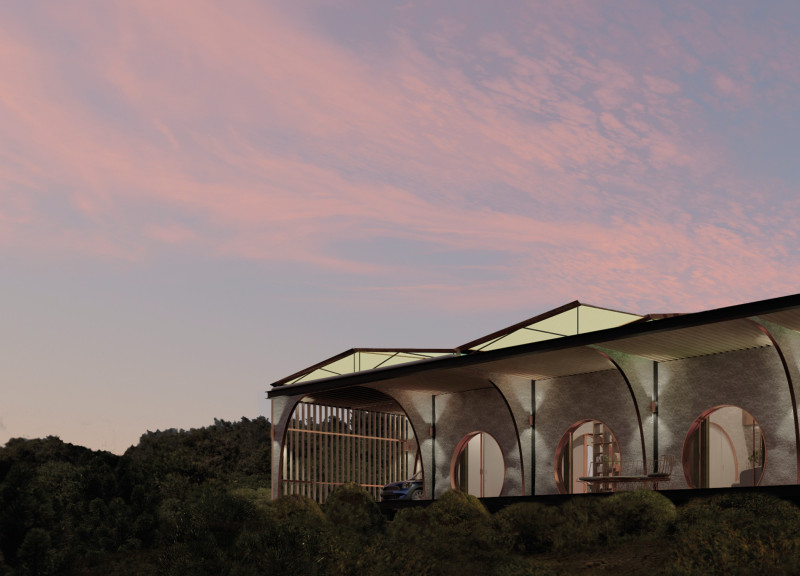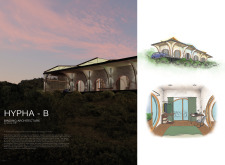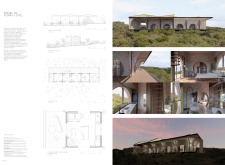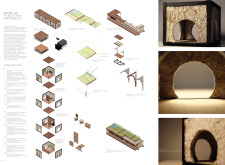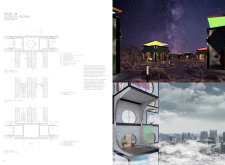5 key facts about this project
Functionally, HYPA - B provides a versatile living space that can shift to accommodate different lifestyles. The architecture consists of modular blocks that can serve a variety of purposes, allowing residents to reconfigure their environments according to personal needs and preferences. This adaptability is a critical characteristic of the project, enhancing the overall experience of living in the space. Each block serves as an individual unit, designed to facilitate interactions among residents while also offering private areas as needed. This balance of communal and private spaces reinforces the project's aim to foster a sense of community and belonging.
The architectural design integrates elements that cater to both aesthetic appeal and practical utility. The use of precast concrete for structural elements provides robustness and longevity, while timber accents add warmth and character to the interiors. The selection of mycelium panels as an innovative building material highlights a commitment to sustainability; these biocomposite panels serve a dual purpose of insulation and aesthetic contribution, aligning with the project’s environmentally conscious objectives. Glazed openings, characterized by their curved edges, not only invite natural light into the living areas but also offer stunning views of the surrounding landscape, reinforcing a connection to nature.
In terms of layout, the project employs an open plan that encourages social interaction while still allowing for individual privacy. The design incorporates natural ventilation and climate-responsive features, such as rainwater collection systems and strategic shading, which promote energy efficiency and comfort. These elements work together to create an inviting atmosphere that is in tune with its environment, minimizing the ecological footprint of the construction.
One of the unique design approaches of HYPA - B is its emphasis on modularity. The concept of living blocks allows for an engaging lifestyle that can evolve over time. This adaptability not only meets the practical needs of the residents but also reflects an understanding of contemporary living dynamics where flexibility is paramount. Additionally, biophilic design principles permeate the project, enabling a seamless flow between indoor and outdoor spaces, which enhances the overall residential experience.
Overall, the HYPA - B project represents a significant advancement in architectural design, showcasing a dedicated effort to create not just houses but homes that resonate deeply with their inhabitants and surroundings. The thoughtful integration of materials, attention to functionality, and innovative design approaches underscore the project's commitment to sustainability and community engagement. For those interested in learning more about this architectural endeavor, including its architectural plans, architectural sections, and architectural ideas, exploring the project presentation will provide deeper insights into the comprehensive design strategies employed throughout.


